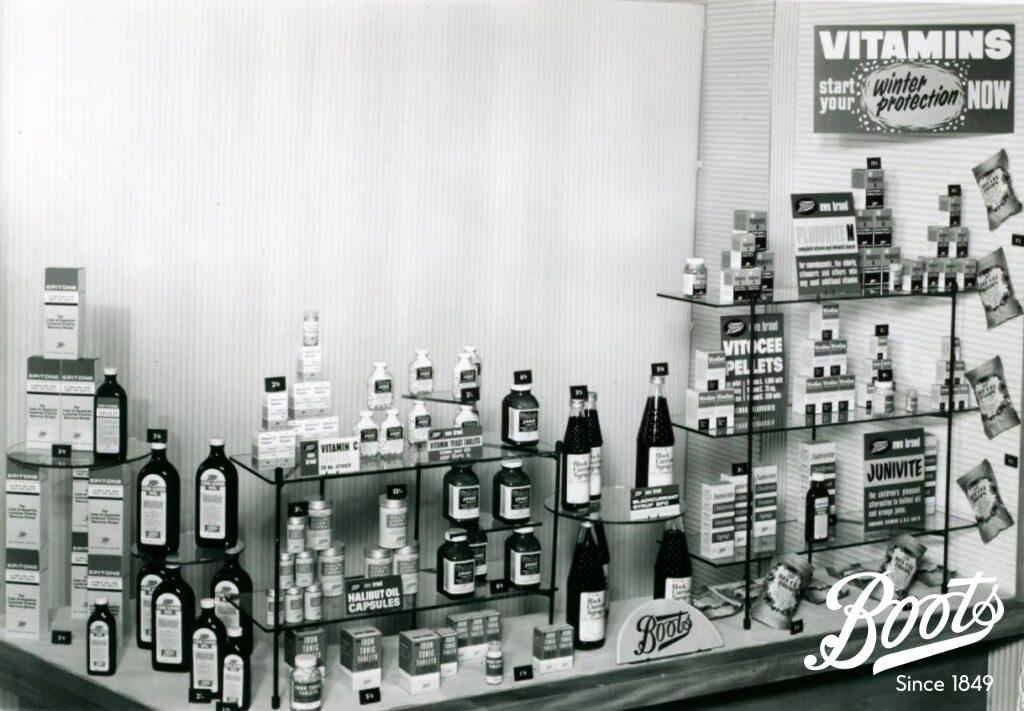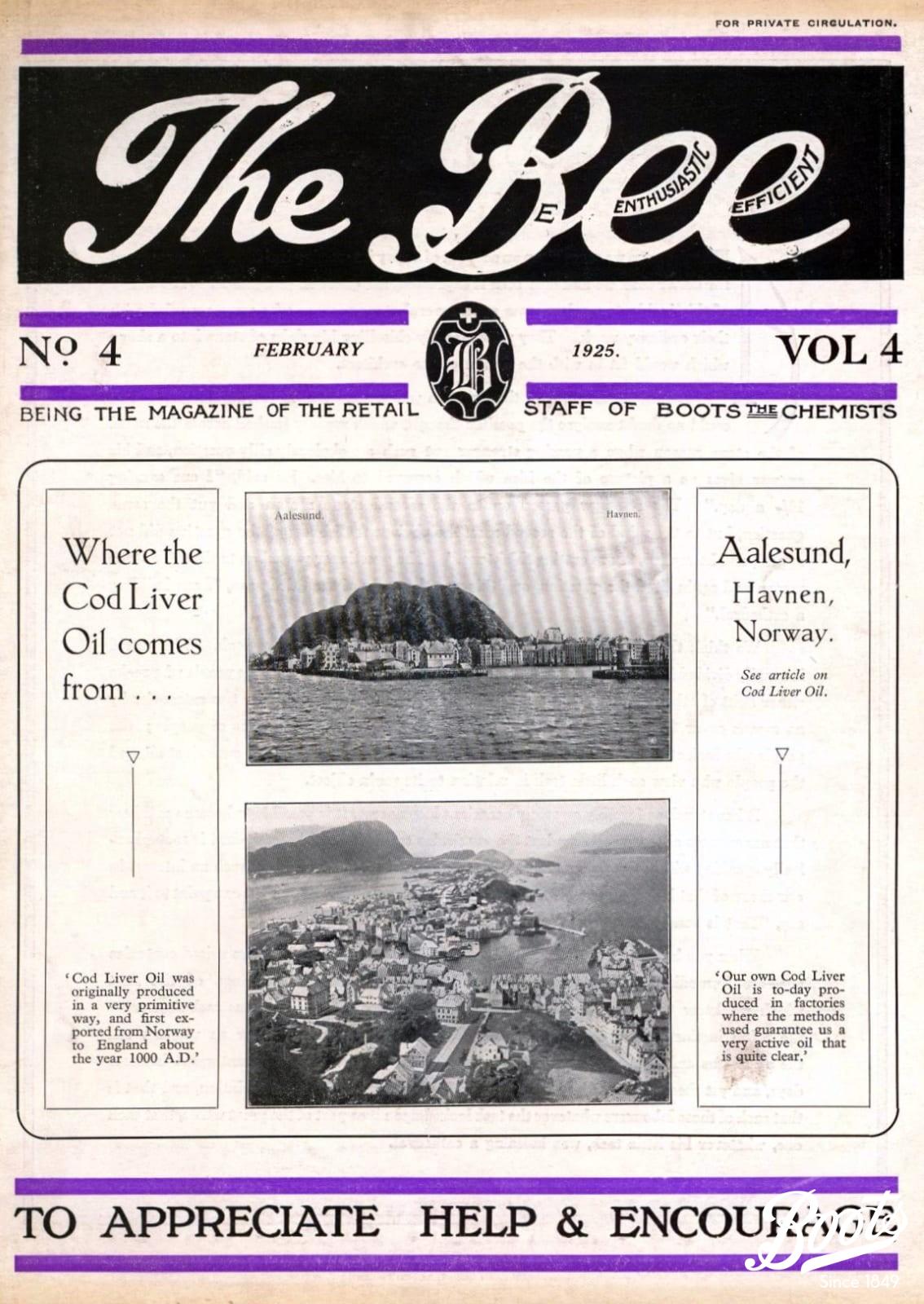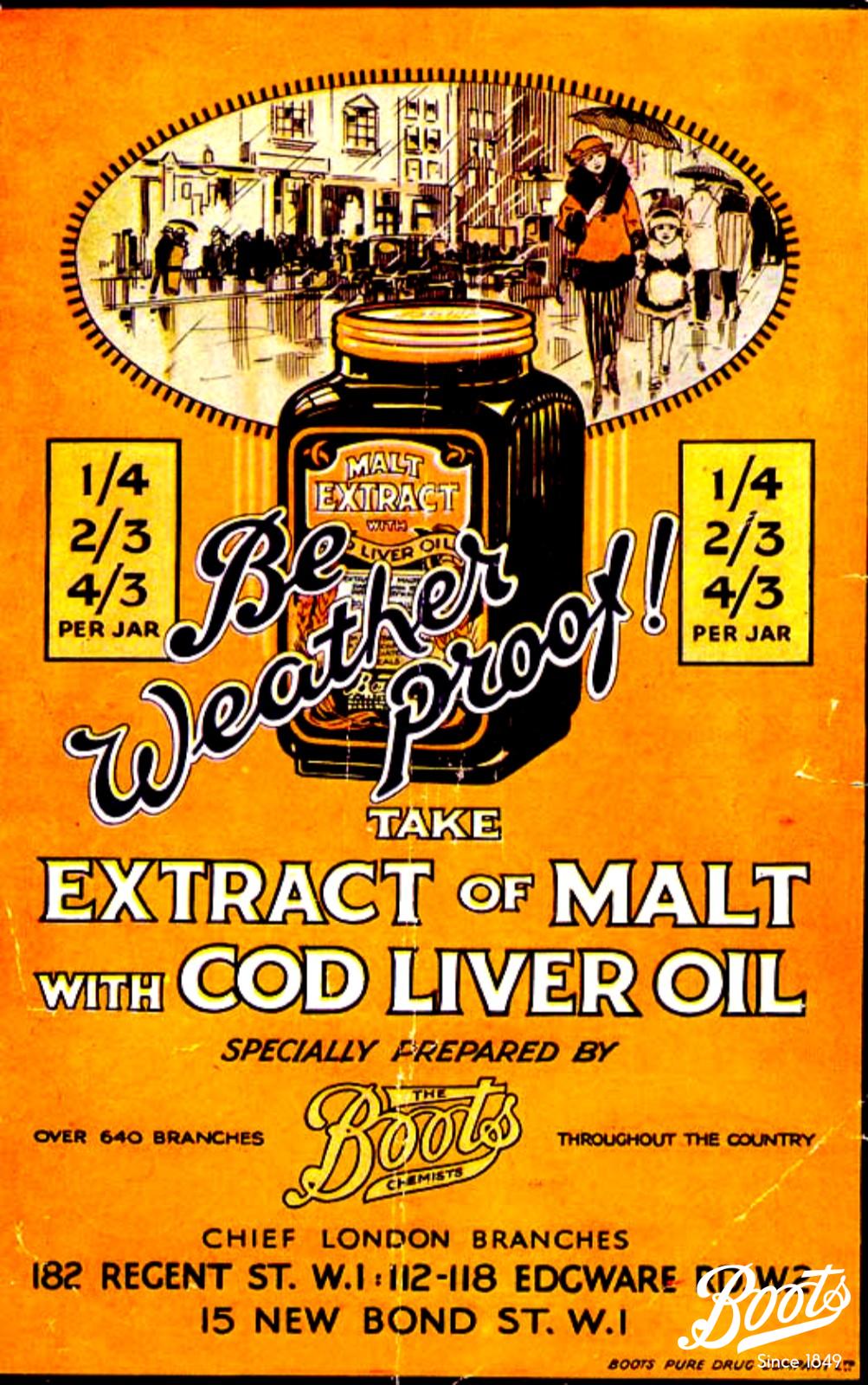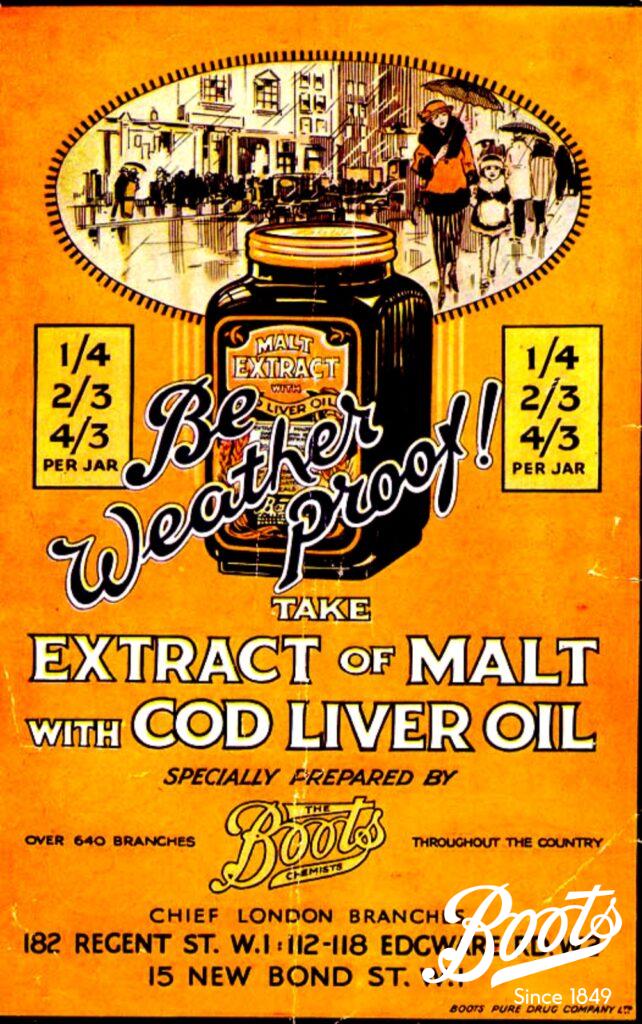
Time to read
Ushering in the ‘vitamin age’ with cod liver oil
Long reviled for its distinctive taste, the popularity of cod liver oil surged in the 1920s when it became one of the first household remedies to be studied for vitamin potency.
Cod liver oil had been a staple in British chemist shops for generations. This fishy fortifier was used to treat a myriad of ailments, from cold and flu to tuberculosis and rickets. A large spoonful was usually taken by mouth, which wasn’t very tasty, perhaps extending the expectation that medicines were a necessary endurance if people wanted to see health improvements.
Boots sold external brands of the fish oil before producing their own lines. Cod liver oil sales and production were one of the company’s first sustained international product ventures.

Norway or Newfoundland?
The medicinal properties of cod liver had been accepted among northern European populations for generations. When Boots started stocking cod liver oil in the latter half of the nineteenth century, they sourced their product exclusively from Norway. As demand for the pungent remedy grew domestically, the company maintained close ties with Norwegian communities for decades, contracting local fisheries to ensure supply.
During the First World War, Germany began to buy up supplies of Norwegian oil. As part of the war effort, the British Government put pressure on Boots to source more goods from the British Empire. The Dominion of Newfoundland (today a Canadian province) already had a strong cod liver industry. Newfoundland fisheries approached Boots representatives, who were eager to test out the quality of their fish livers to see if they matched up to Norwegian cod.
Prior to the 1920s, cod livers were graded for quality based on colour, smell, and taste. But the Newfoundland liver tests commissioned by Boots demonstrated a brand-new approach that helped to usher in the ‘vitamin age’ for the company.

Focus on vitamins
Scientists were just beginning to understand the role of vitamins. These were micronutrients, first discovered in the 1910s, of which a deficiency was found to make people unwell. By the 1920s, scientists had identified vitamin A (important for the immune system and healthy eyes) and vitamin D (necessary for the development and strengthening of bone). Both were found to be present in cod liver oil in substantial quantities. The product was immediately heralded as a sure-fire way for ordinary people to get their necessary vitamins.
Advertisements encouraged parents to protect their children by regularly buying vitamin supplements. The discovery of vitamins changed the way that cod liver oil was consumed. Previously, people had only taken it as a medicine when they were ill. Now, backed by advertisements in the press, households were advised to incorporate vitamin supplements into their everyday routines. Parents, in particular, were urged to protect their children’s health by feeding them cod liver oil every day. However, the liquid still tasted disgusting! Boots tried many crafty ways to make their fish oil more palatable. They mixed it with malt extract and even toffee to try to disguise its taste.

Global powerhouse
By 1935, Boots was buying around 80% of its cod livers from Newfoundland. Backed up by efficient production methods, it was able to offer a range of products aimed at different social classes. British cod livers were used to offer tiered choice to the buyer, even though they were found to have less vitamin potency than their Norwegian and Newfoundland cousins.
Boots enjoyed huge success with their cod liver lines both at home and abroad. Cod liver oil and cod liver emulsion were among the first medicinal preparations the company exported to India. By the 1950s, Boots were selling cod liver oil in wholesale markets across Asia, North America, and Africa. By the 1950s you could buy it in capsule form which eliminated the fishy taste. Each international market brought its own set of challenges. The shelf life, packaging, and transportation of cod liver oil was a difficult thing to get right in each geographic region.
Image Gallery
WBA/BT/11/15/1/19 Sheffield shop exterior with several window signs featuring ‘Engelberg’s Norwegian Cod Liver Oil’, 1896..
WBA/BT/27/39/2/2/44 Front cover, The Bee, Feb 1925.
WBA/BT/11/45/2/373 ‘Be weather proof’ advertisement, c1920s
WBA/BT/11/45/2/772 ‘Now even on sunless days your children can have the sunshine their growing bodies need’ advertisement, 1932.
WBA/BT/11/46/9/349 ‘Vitamins: start your winter protection now’ display, c1950s



